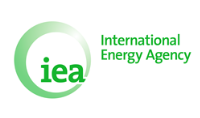
 The good news is that on 8 November the International Energy Agency released its 2011 “World Energy Outlook.”
The good news is that on 8 November the International Energy Agency released its 2011 “World Energy Outlook.”
While it will cheer nuclear advocates, overall the report makes for grim reading.
Pulling no punches, the report states at the outset, “There are few signs that the urgently needed change in direction in global energy trends is underway.”
Stripped of its cautious language, the IEA report essentially noted that should present trends continue, the world’s governments through a lack of progressive initiative embracing alternative energy sources would continue to rely on ‘tried and true” fossil fuels, resulting in increased pollution, more fossil-fuel dependency and increasingly upward energy prices.
For environmentalists, this is all good news, but the report contained a caveat virtually anathema to all green movements, that accordingly, governments should reconsider their reluctance to embrace nuclear power, as it does not generate greenhouse gases.
Like many discussions in Western economies since 2008, when the global recession first began to draw blood, the issue of reliable energy production ultimately devolves down to dollars and cents issues.
The grim reality for environmentalists is that no single renewable energy resource, from wind power to solar energy through biofuels, has remotely become competitive with kilowatt hours of electrical energy generated by coal or oil-fired power plants. The debate pits those opposed to a transition to greener technologies to those considering the bottom line, despite greenhouse gas emissions.
Even worse for the environmentalists, the IEA report advocates that as a short-term solution, governments ought to reconsider nuclear power, as it produces zero CO2 emissions. Projecting into the future the report notes, “A low-nuclear future would also boost demand for fossil fuels: the increase in global coal demand is equal to twice the level of Australia’s current steam coal exports and the rise in gas demand is equivalent to two-thirds of Russia’s current natural gas exports. The net result would be to put additional upward pressure on energy prices, raise additional concerns about energy security and make it harder and more expensive to combat climate change. The consequences would be particularly severe for those countries with limited indigenous energy resources which have been planning to rely relatively heavily on nuclear power”
But while sketching out a bleak scenario should governments remain largely disengaged to the larger issues involved in energy production, the IEA report nevertheless ends on a cautiously optimistic note, with its authors concluding, “International concern about the issue of energy access is growing. The United Nations has declared 2012 to be the ‘International Year of Sustainable Energy for All’ and the Rio+20 Summit represents an important opportunity for action. More finance, from many sources and in many forms, is needed to provide modern energy for all, with solutions matched to the particular challenges, risks and returns of each category of project. Private sector investment needs to grow the most, but this will not happen unless national governments adopt strong governance and regulatory frameworks and invest in capacity building. The public sector, including donors, needs to use its tools to leverage greater private sector investment where the commercial case would otherwise be marginal. Universal access by 2030 would increase global demand for fossil fuels and related CO2 emissions by less than 1%, a trivial amount in relation to the contribution made to human development and welfare.”
Accordingly, what is most notable about the IEA report is two things.
First, energy options beyond dependence on traditional fossil fuels such as coal and oil not only exist, but are available in significant amounts to make a serious contribution.
Secondly, as Germany’s experience in weaning itself off nuclear energy is showing, the alternatives are more expensive than current power production modes.
According to the IEA’s scenarios then, the issue of global power production over the next two-three decades devolves upon two major issues.
The first is cost, which will undoubtedly be an uphill struggle for many governments seeking to meet the population’s rising energy demands, who will be loathe to endure increasing energy bills.
The second consideration is the contentious issue of global warming, and the impact of traditional fossil fuel-fired power plants belching vast amounts of CO2 into the atmosphere.
While even the most diehard proponents of traditional power plant electrical generation to not deny that their facilities emit significant amounts of carbon dioxide, they denigrate the concerns of environmentalists as ‘fuzzy science.”
So, at the end of the day, the two fundamental issues facing the world’s nations seeking to satiate their population’s demand for reliable and inexpensive power devolve down to cost and scientific projections. We’ll leave the final word to the IEA, which laid out three scenarios, ranging from best- to worst-case – “The wide difference in outcomes between these three scenarios underlines the critical role of governments to define the objectives and implement the policies necessary to shape our energy future.” Accordingly, the major question is whether global governments will have both the cash and political will “to shape our energy future” to the best possible ends
By. John C.K. Daly of http://oilprice.com

Be the first to comment